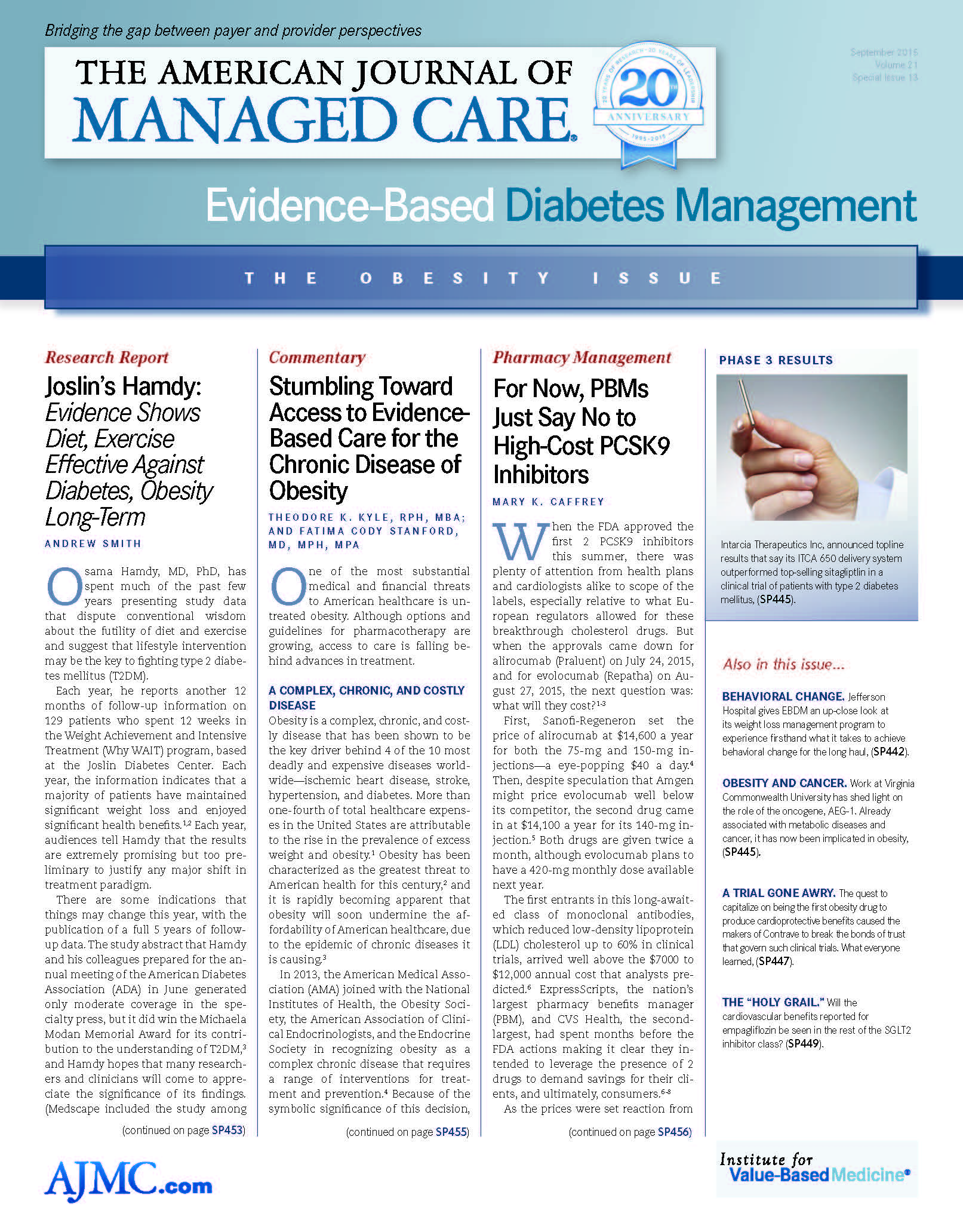- Center on Health Equity & Access
- Clinical
- Health Care Cost
- Health Care Delivery
- Insurance
- Policy
- Technology
- Value-Based Care
Non-Surgical Balloon Device Approved to Treat Obesity
Patients being treated for obesity gained a new, nonsurgical treatment option on July 28, 2015, when the FDA approved the ReShape Integrated Dual Balloon System. This device is designed to help adult patients who are obese achieve weight loss without surgery by taking up space in the stomach. In its statement, the FDA said the balloon “may trigger feelings of fullness, or [work] by other mechanisms that are not yet understood.”
The balloon is delivered into the stomach through the mouth via an endoscopic procedure done on an outpatient basis. Patients are mildly sedated, and the process takes about 30 minutes. The balloon is used in combination with a supervised diet and exercise plan to achieve weight loss and maintain it for a short period afterward. Designed to be temporary, the FDA said the balloon should be removed after 6 months.
“For those with obesity, significant weight loss and maintenance of that weight loss often require a combination of solutions, including efforts to improve diet and exercise habits,” said William Maisel, MD, MPH, acting director of the Office of Device Evaluation at the FDA’s Center for Devices and Radiological Health. “The new balloon device provides doctors and patients with a new nonsurgical option that can be quickly implanted, is nonpermanent, and can be easily removed.”
Approval came after a clinical trial with 326 patients who were obese with a body mass index of 30 to 40 kg/m2 and who had at least 1 other obesity-related condition. In the trial, 187 patients were randomly selected to receive the balloon device; the control group underwent an endoscopic procedure, as well, but did not receive the balloon device. Those with the device lost an average 14.3 lb (6.8% of their body weight) while the control group lost 7.2 lb (3.3% of their body weight). Six months after removal, those treated with the balloon had kept off an average 9.9 lb of the weight they had lost.
Once the device is placed in the stomach, possible adverse effects include head-ache, muscle pain, vomiting, abdominal pain, indigestion, gastric ulcers, and nausea from sedation and the procedure. In rare cases, severe allergic reaction, heart attack, esophageal tear, infection, and breathing difficulties can occur. The devices should not be used in patients who have previously had bariatric surgery or who have inflammatory bowel disease, large hiatal hernia, symptoms of gastric emptying, are pregnant, or use aspirin daily. Reference
FDA approves nonsurgical temporary balloon device to treat obesity [press release]. Silver Spring, MD: FDA; July 28, 2015. www.fda.gov/NewsEvents/Newsroom/PressAnnouncements/ucm456296.htm. Accessed August 31, 2015.

Managed Care Reflections: A Q&A With Laurie C. Zephyrin, MD, MPH, MBA
November 12th 2025To mark the 30th anniversary of The American Journal of Managed Care, each issue in 2025 includes a special feature: reflections from a thought leader on what has changed—and what has not—over the past 3 decades and what’s next for managed care. The November issue features a conversation with Laurie C. Zephyrin, MD, MPH, MBA, senior vice president for achieving equitable outcomes at the Commonwealth Fund. This interview has been edited for length and clarity.
Read More

